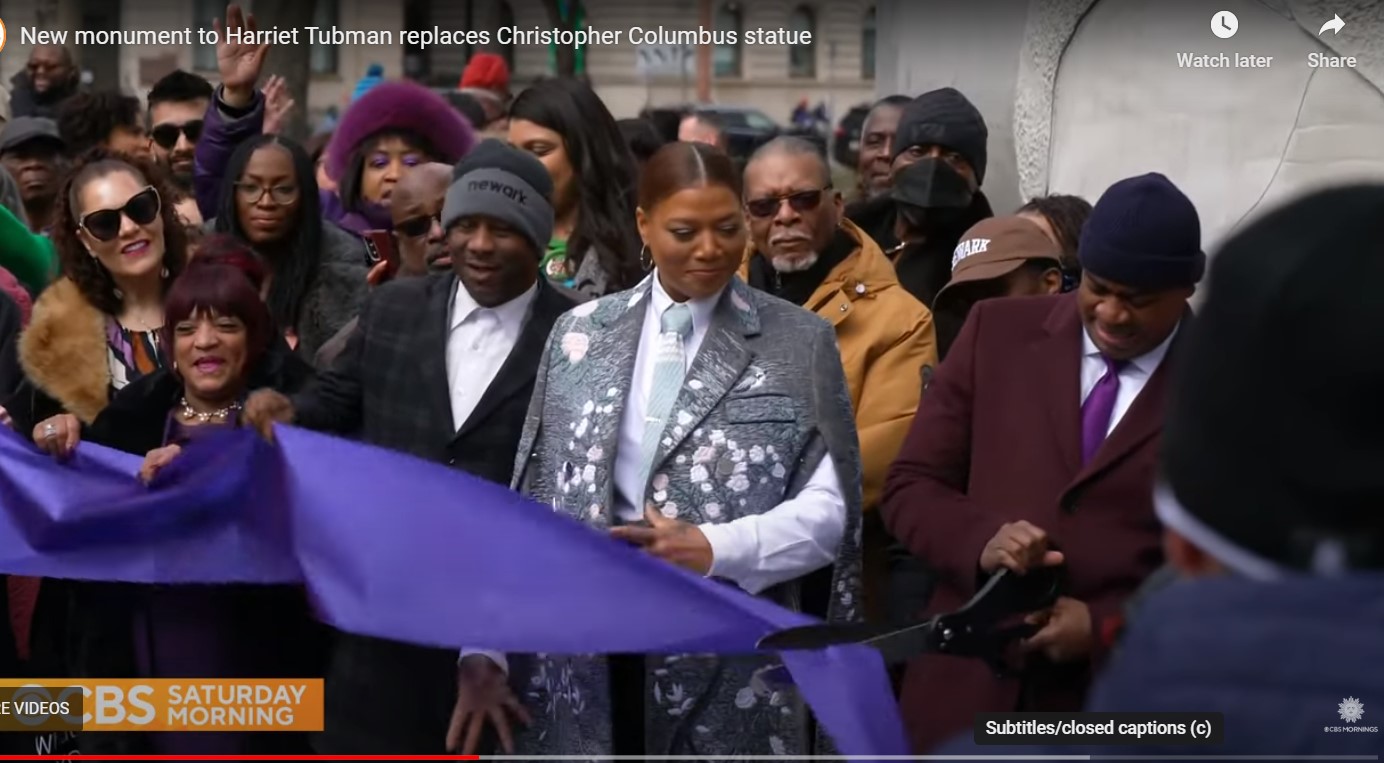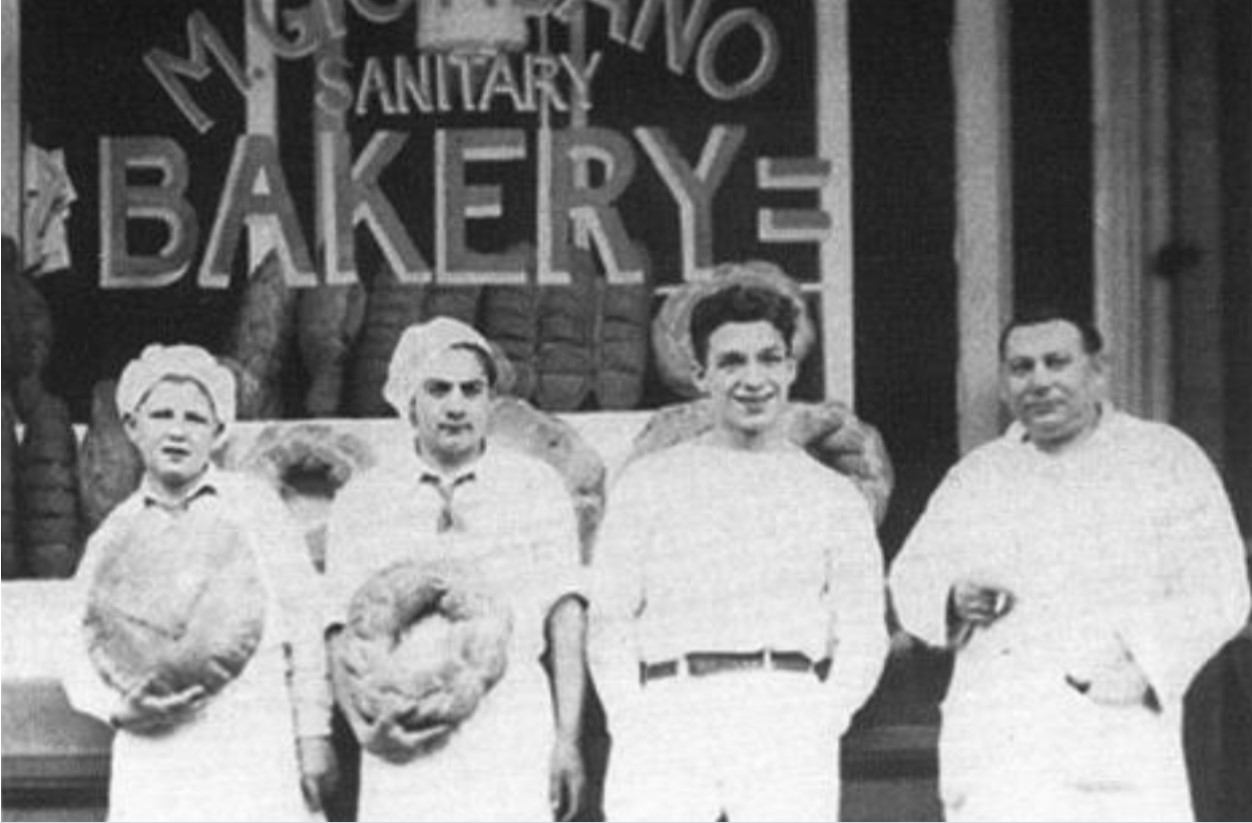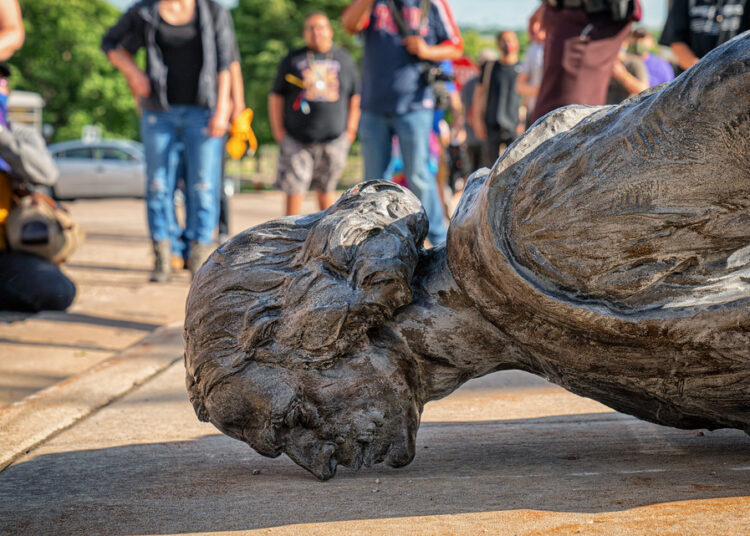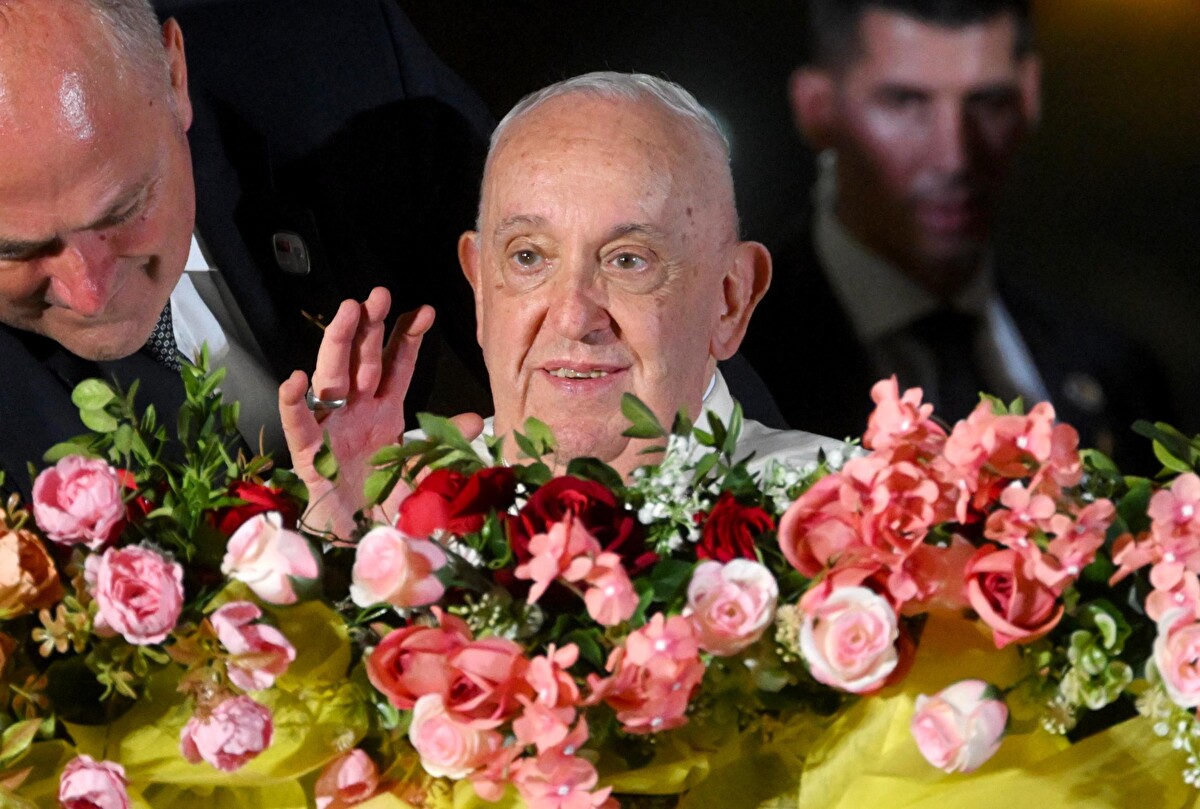A new Harriet Tubman monument in Newark, New Jersey, was unveiled Thursday, replacing a Christopher Columbus statue that was removed following the killing of George Floyd in 2020. “We wanted to take it a step further, beyond just tearing something down, we wanted to build something,” Newark Mayor Ras Baraka said.
During the ceremony in what is now downtown Newark’s Harriet Tubman Square (formerly Washington Park), he explained Newark’s connection with Tubman, who helped “shepherd folks out of slavery into freedom”. Titled “Shadow of a Face,” the 25-foot-tall monument is made up of steel that extends into a trellis visitors can walk under. Timelines of Tubman’s life and Newark’s abolitionist history are displayed on a circular wall, as Newark native Queen Latifah narrates the history behind the new monument.
The Christopher Columbus statue the new monument is replacing was removed by the city in June 2020, following nationwide racial justice protests during which more than 130 Confederate and other historic statues were removed across three dozen states. Baraka said city officials thought Tubman was a suitable replacement because she was a woman “who fought for democracy and freedom.”

In a conciliatory tone, he added that replacing the statue is “by no means” a way of telling people that they shouldn’t celebrate Columbus. “We’re just asking that you not make us celebrate him as well”.
While Newark residents are satisfied and happy with this new development, the wider Italian American community is not. They have been fighting against the removal of monuments to Christopher Columbus for many years now and the controversy has been heated indeed. Removing the statues amounts to an erasure of their history as immigrants in this country, as a denial of the contributions they have made to the greatness of America.
It is a sad fact that there are times in history when the happiness of one ethnic group can only come at the price of alienating another. Yet, Italian Americans are not the only group that may have objections to tearing down the Columbus monuments; there are many others who equally do not believe in canceling out historical figures who ought to no longer represent today’s values, and much has been written about historical revisionism—the attempt to reinterpret historical events by projecting onto to them current moral values.
Every ethnic community has its symbols and these change with time and the demographic profile of an area. In the past, Newark had a thriving Italian American community. Seventh Avenue, formerly known as the First Ward, was settled by Italian immigrants beginning in 1870. The First Ward was once known as Newark’s Little Italy. Joe Di Maggio and other Italian American figures came out of that community.

In its heyday, Seventh Avenue, formerly called the First Ward, had a population of 30,000, including 11,000 children, in an area of less than a square mile. The center of life in the neighborhood was St. Lucy’s Church, founded by Italian immigrants in 1891. Throughout the year, St. Lucy’s and other churches sponsored processions in honor of saints that became community events where their ethnic identity was further affirmed and bonded.
But Newark’s Little Italy “disintegrated” in the 1950’s, according to the site of the Italian Sons and Daughters of America. Today the city is 48% Black and 37% Latino, according to the U.S. Census. There are virtually no Italian Americans left to honor the symbol of their group. Tubman is a powerful representation of the African American community and therefore, a worthy symbol of the residents.

But what does Columbus represent to Italian Americans? In the wake of the vandalism of Columbus monuments throughout the tri-state area, and the campaign waged by New York City Council Speaker Melissa-Mark Viverito in 2017 to abolish the Columbus Day parade, Angelo Vivolo, the president of the Columbus Citizens Foundation, told radio host John Catsimatidis that it was an “outrage and an affront to all Italian-Americans…I don’t see Christopher Columbus as a symbol of hate. I see Christopher Columbus being a symbol of Italian American contributions to our nation.”
Erecting or maintaining historical monuments need not be a question of either/or. A commenter posted what to many may be a common-sense observation: “Still waiting to hear why statues need to replace other statues; why new ones can’t be erected next to the old ones. Why people think that erasing inconvenient truths about our history, instead of leaving them as lessons learned, is a good or healthy idea.” Can we not build on the past without tearing it down first?












